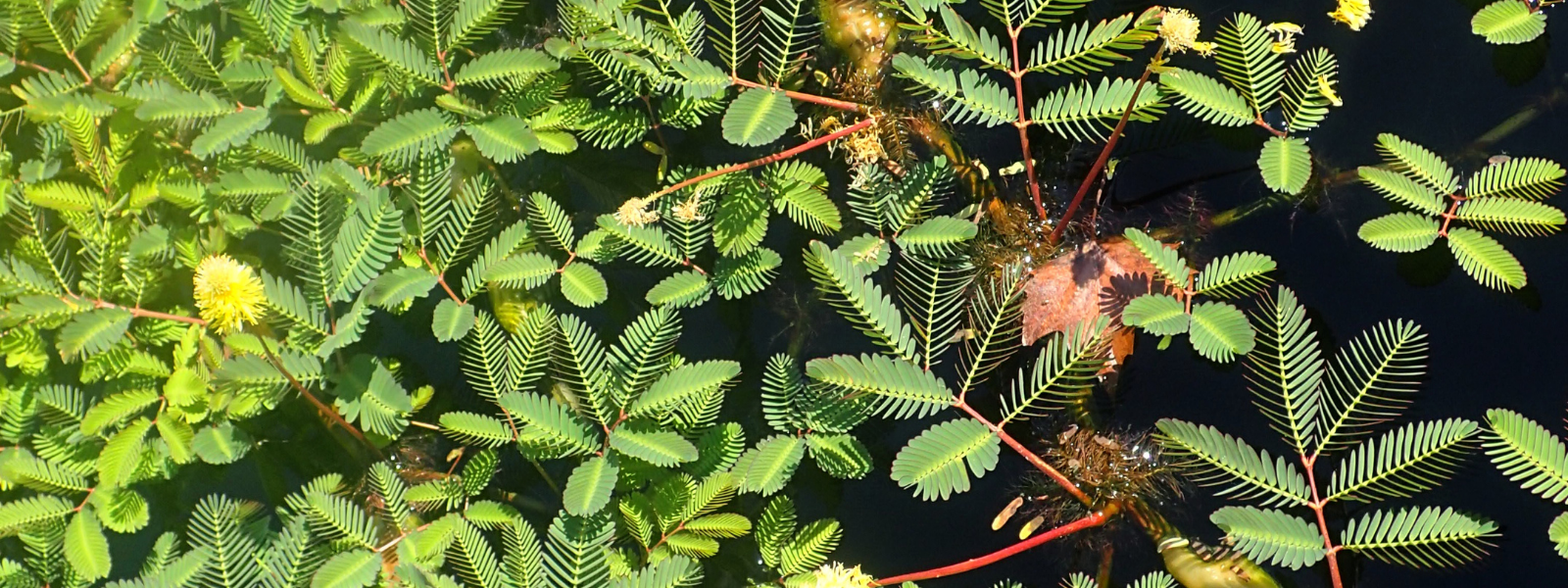
Common Name
Water mimosa, Sensitive neptunia
Scientific Name
Neptunia oleracea
Family
Fabaceae
Lifecycle
Perennial
Seasons of Growth
Year-round
Key Distinguishing Feature
Floating aquatic plant with sensitive leaves
Growth Form: Water Mimosa plants grow in aquatic environments, often in shallow water or on the margins of ponds, lakes, and streams. They have a prostrate or semi-erect growth habit.
Leaves: The leaves of Water Mimosa are sensitive to touch and fold inward or close when touched. They are typically pinnately compound with small, rounded leaflets.
Flowers: The flowers of Water Mimosa are small and usually yellow, although flower colour can vary depending on the species. They are borne on elongated stems or spikes.
Roots: Water Mimosa plants have fine roots that grow in the water or submerged in soil.
Ecological Impact:
- While Water Mimosa is not typically considered as invasive as some other aquatic plants, it can form dense mats in water bodies and alter the aquatic environment. In some cases, it may outcompete native aquatic vegetation.
Control Methods:
- Control of Water Mimosa usually involves mechanical and cultural methods.
- Mechanical methods include manually removing the plants, particularly when they become problematic in water bodies.
- Cultural methods may involve altering water management practices to create less favorable conditions for the growth of Water Mimosa.
- Preventing the introduction and spread of Water Mimosa in new areas is essential for its management.
Water Mimosa is a relatively less invasive aquatic plant compared to species like Water Hyacinth or Water Lettuce. However, it can still become problematic in certain water bodies and may require control measures to protect native aquatic ecosystems. Local environmental agencies often provide guidance on the best control practices for this plant.




